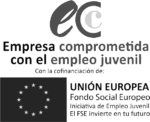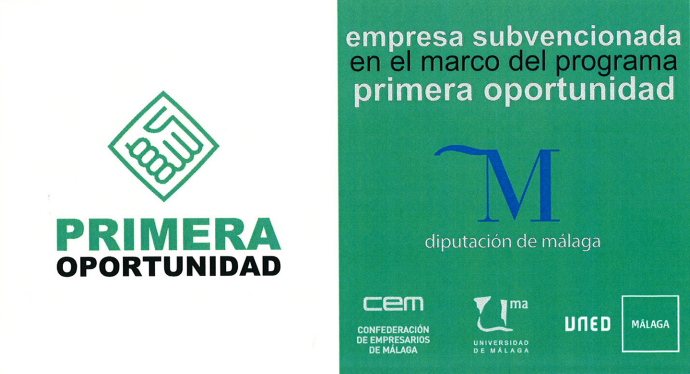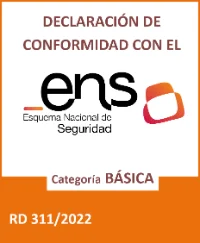- What is a Formal Email in Spanish?
- Complete Guide to Writing a Formal Email in English
- Key Components of a Formal Email in English
- Common Errors in Writing a Formal Email in English
- Tips to Improve your Formal Email in Spanish
- Examples of Formal Emails in Spanish for Different Contexts
- Common Mistakes When Writing a Formal Email in Spanish and How to Avoid Them
- Ideal Format for a Formal Email in Spanish
- Tips and Best Practices for Effective Formal Spanish Emailing
What is a Formal Email in Spanish?
Complete Guide to Writing a Formal Email in English
It is common that, in our day-to-day lives, we have to deal with situations that require formal communication. A formal email in Spanish is a form of written communication used in business, institutional or professional contexts. Its main objective is to transmit messages in a clear, respectful and structured manner. This type of email usually complies with certain conventions and specific rules that must be followed to guarantee the effectiveness and professionalism of the message.
- Formality: Use of respectful language and appropriate courtesies.
- Structure: It includes a clear introduction, development and closure.
- Purpose: Used for formal applications, reports, presentations, etc.
The correct wording of a formal email in Spanish not only ensures clear and efficient communication, but also reflects the professionalism of the sender.
Key Components of a Formal Email in English
In order to write an effective formal email in Spanish, it is essential to know and follow its basic structure. The key components are described below:
- Subject: It must be clear, concise and relevant in order to capture the attention of the recipient from the outset.
- Greetings: Use appropriate forms of politeness, such as "Dear [Name]" or "To whom it may concern".
- Message Body: Divided into introduction, development and conclusion. Each section should be short and to the point.
- Farewell: Include polite phrases such as "Yours sincerely" or "Best regards", followed by the sender's name and title.
These elements are essential to convey professionalism and clarity in any formal email in Spanish.
Common Errors in Writing a Formal Email in English
Even small business owners with experience in email marketing can make mistakes when writing a formal email in Spanish. Some of the most common mistakes are:
- Use of informal language: Avoid colloquialisms and jargon to maintain a professional tone.
- Disorganisation: Failure to structure mail properly can lead to confusion and misunderstandings.
- Lack of clarity: Being too long or not getting straight to the point can distract or bore the reader.
Being aware of these mistakes and avoiding them can significantly improve the effectiveness of a formal email in Spanish.
Tips to Improve your Formal Email in Spanish
If you are interested in writing a formal email in Spanish, here are three basic tips for perfecting it:
- Review: Always proofread your message before sending it to correct possible grammatical and spelling mistakes.
- Personalisation: If possible, address your email to a specific person rather than using generic greetings.
- Clarity and Conciseness: Keep your messages clear and direct to facilitate understanding.
By following these tips, you will be able to write better formal emails in Spanish and improve communication in your business.
Examples of Formal Emails in Spanish for Different Contexts
Formal Email for Information Requests
A formal email in Spanish is essential to request information in a professional manner. Businesses and small entrepreneurs often need detailed information from suppliers, partners or even potential customers. In this type of email, it is crucial to maintain a respectful and clear tone. According to a study by Statista, 62% of professionals prefer to receive well-structured emails when seeking important information. An example of such an email can include both a formal greeting and a detailed explanation of the request.
Some recommendations for structuring this type of mail include:
- Initial greeting (Dear, Dear)
- Personal and company presentation
- Clear and concise description of the requested information
- Polite and formal farewell
Example:
Dear Mr. Perez,
My name is Juan López, and I represent the company XYZ. We are writing to you with the purpose of requesting detailed information about the services that your company offers in the area of logistics.
We thank you in advance for your attention and cooperation.
Sincerely,
Juan López
XYZ S.A.
Formal Email for Product or Service Presentation
Presenting products or services to prospective customers or partners is a delicate task that requires a formal email in Spanish well structured. This type of email should stand out not only for its formality, but also for its ability to capture the attention of the recipient. According to HubSpot, personalised emails have a 29% higher open rate. Therefore, it is crucial to include specific details that show knowledge of the recipient and their needs.
For an effective submission, the mailing should contain:
- Appropriate greeting (Apreciado/a, Respetado/a)
- Brief and relevant company introduction
- Detailed description of the product or service presented
- Invitation to a meeting or follow-up call
Example:
Dear Ms. Gómez,
I am Ana Martinez, sales manager of ABC Company. We are pleased to introduce you to our new consulting services that we believe may be of great interest to your company.
We would like to arrange a meeting to provide you with a detailed demonstration of how our services can meet your needs.
We look forward to hearing from you.
Yours sincerely,
Ana Martínez
ABC Company
Formal Email for Meeting Confirmations
Meeting confirmations are an essential part of the business world, especially in the context of the formal email in Spanish. Such emails ensure that all parties are aware of important details and can contribute to efficiency and timeliness. According to a McKinsey report, effective time management can increase business productivity by up to 20%.
When drafting a meeting confirmation email, it is recommended to include:
- Formal greeting (Dear Sir/Madam)
- Affirmation of the scheduled meeting
- Specific details of the meeting (date, time, place, and agenda)
- Expression of expectation or gratitude
Example:
Dear Ms. González,
I am writing to confirm our meeting scheduled for next Wednesday, 15 November at 10:00 AM at our offices located at 123 Calle Mayor. During the meeting, we will discuss opportunities for collaboration between our companies.
Thank you in advance for your time and attention.
Cordially yours,
Roberto Sanchez
Company DEF
Common Mistakes When Writing a Formal Email in Spanish and How to Avoid Them
1. Inappropriate Use of Greetings and Farewells
One of the most recurrent mistakes when drafting a formal email in Spanish is the inappropriateness of greetings and farewells. It is essential to start with a formal greeting such as "Dear Sir/Madam" and end with an appropriate farewell such as "Yours sincerely" or "Best regards". The incorrect or informal use The use of such phrases can give an unprofessional image, especially in a business context.
2. Structure and Clarity of the Message
Another common mistake is the lack of clear structure in the body of the email. A formal email should have a clear introduction, development and conclusion. It is advisable to use short paragraphs and HTML lists to improve readability. According to a HubSpot study, emails with a clear structure have a higher readability. 35% higher probability to be answered.
3. Spelling and Grammar
The correct spelling and grammar are fundamental in a formal email in Spanish. Errors in this aspect not only affect the comprehension of the message, but can also damage the credibility of the company. According to a Grammarly survey, 85% of people consider that grammatical errors negatively affect their perception of the sender. It is always advisable to proofread and, if possible, use spell-checking tools before sending an email.
Ideal Format for a Formal Email in Spanish
In the competitive world of email marketing, knowing the ideal format for a formal email in Spanish can make the difference between effective communication and a message that goes unnoticed. For small business owners interested in maximising the impact of their emails, it is crucial to understand how to properly structure a formal email.
Headline
The header of a formal email should be clear and concise. Generally, it includes the sender's name, the subject and the date. A good example would be:
- Name of sender: Juan Pérez
- Subject: Partnership Proposal
- Date: 15 October 2023
According to a study by Radicati Group (2021), approximately 47% of emails are opened based on the subject line, underlining the importance of creating attractive but professional titles.
Email Body
The body of a formal email should be divided into clear sections: greeting, introduction, main content and farewell.
- Greetings: A formal greeting might be "Dear [Name]" followed by a comma.
- Introduction: It should contain a brief introduction and the purpose of the email. Avoid colloquial language and be straight to the point.
- Main content: This is where the subject of the email is developed. Use short, clear paragraphs and, if necessary, use bulleted lists to organise the information.
- Farewell: Close your message with a polite phrase such as "Yours sincerely" or "Best regards," followed by your signature.
A HubSpot study (2022) revealed that emails with clear structure and highlighted key points are 65% more likely to be read in full.
Signature
A formal email signature should include your full name, position, and contact details such as telephone and professional email address. Including links to professional social media or company websites can also be beneficial.
In summary, understanding the ideal format for a formal email in Spanish involves paying attention to each component of the email and making sure that everything is aligned with current email marketing best practices and trends.
Do you have doubts about how to structure your professional email?
Tips and Best Practices for Effective Formal Spanish Emailing
1. Maintaining a Clear Structure
A formal **email in Spanish** should have a clear structure to facilitate the understanding of the message. The basic structure includes a formal greeting, an introduction, the body of the message and an appropriate farewell. According to a HubSpot study, emails with an organised structure are 30% more likely to be read in their entirety.
2. Use of Appropriate Language
The language in a **formal email in Spanish** should be precise and professional. Avoid using jargon and idioms, as they can lead to misunderstandings. Instead, use professional vocabulary and a respectful tone. As business communication expert María Martínez points out, "the right choice of words can make the difference between an effective email and one that goes unnoticed".
3. Personalisation of the Message
Personalising your message is crucial to capture the recipient's attention. According to Mailchimp statistics, personalised emails have a 26% higher open rate than bulk emails. Include the recipient's name and, if possible, some specific reference to your company or industry. This shows that you have taken the time to compose a targeted message, which is always welcome.
4. Preventing Common Errors
Avoiding grammatical and formatting errors is essential. Proofread your mail several times before sending it to make sure there are no errors. Also, use spell-checking tools to avoid typos. According to Grammarly, error-free emails are 70% more likely to generate a positive response, which reinforces the importance of this aspect.









